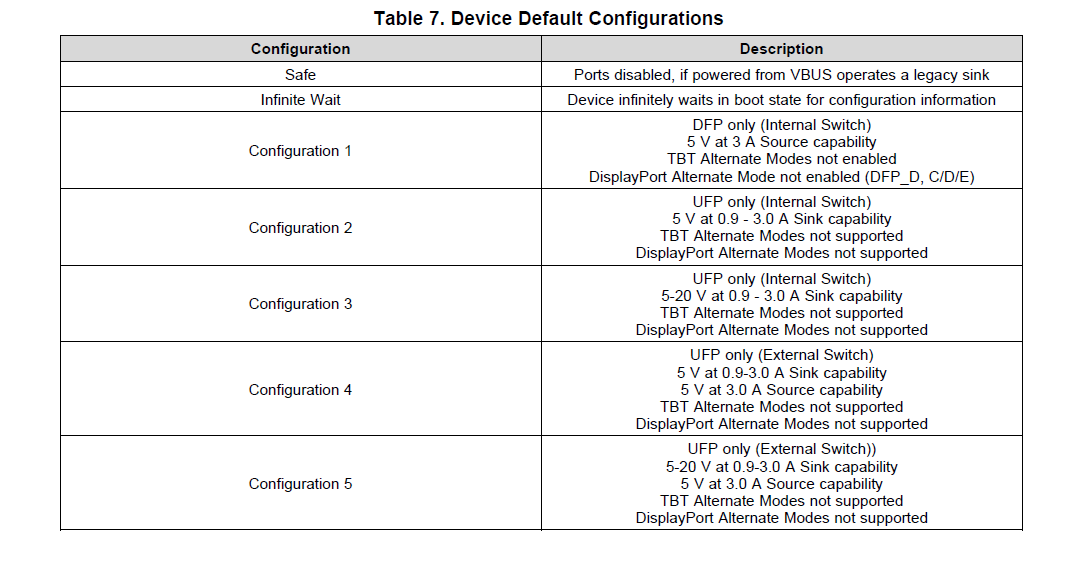Other Parts Discussed in Thread: TPS2546, TPS2549
Dear TI Representative -
We've completed a design based on TPS2546 and TPS65987D and I have a few questions for you:
1. Is there a secure email I can send my schematic for review? It cannot be posted on the forum.
2. Per your recommendation earlier this year, I'm using TPS2546 to control USB-A charging ports for a universal cell phone charger. Should I be using TPS2549 instead? That part has an extra divider mode and lower RDSon. I can't leverage the cable comp because I'm powering a bunch of these off a single supply, but the lower switch resistance and additional divider mode are desirable.
3. Regarding the TPS65987D...
3.A . Is HRESET equivalent to removing VIN_3v3? We want to be able to do a complete reset if the device locks up, faults, errors, etc. Is HRESET good enough to reset the entire device or should I add a PFET to VIN_3V3?
3.B. The external SPI EEPROM interface is intended for additional profiles so I included it in the board but I am planning on leaving it un-populated. Are you aware of any cell phones that are not able to charge from the TPS65987D without an additional profile? I would like to make sure that I am not leaving anyone out, so much as you are aware of today.
3.C. I am replacing the push buttons of the POWER DUO SOURCE reference design with host processor GPIO. Our board will only provide 5V or 9V, so I am planning on pulsing GPIO1 to enable 9V negotiation and if I need to force it back to 5V I will pulse HRESET.
3.C.1. I am not planning on changing the default configuration, but if we do that I understand I may lose any changes when I reset the device to force it into 5V only mode. Is there another way to put the controller back into 5V only mode other than resetting it?
3.C.2. If I'm planning on using the configuration for the POWER DUO SOURCE reference design, should I leave the unused GPIOs floating or tie them to ground? I am concerned that if they float, the device may go into unknown states. The datasheet says to let GPIO 2 and GPIO5 float, but I don't really want to modify the profile - I would rather use the power duo source firmware you provide without modifying it.
Thank you in advance for your help,
Adam G.



